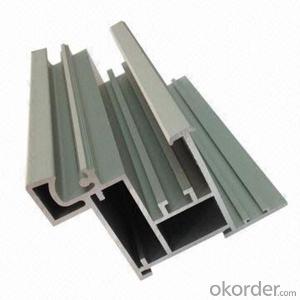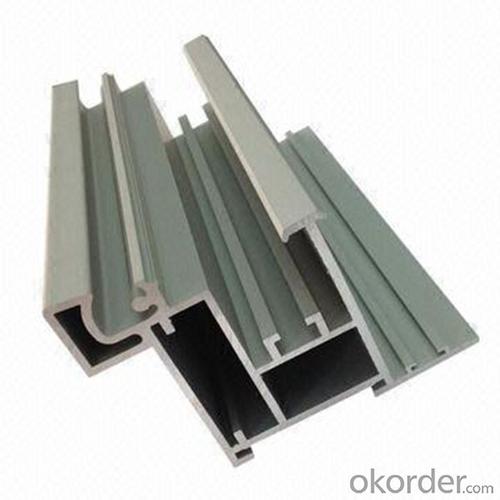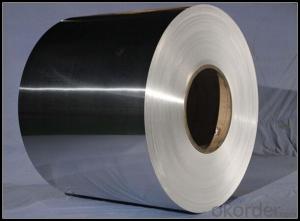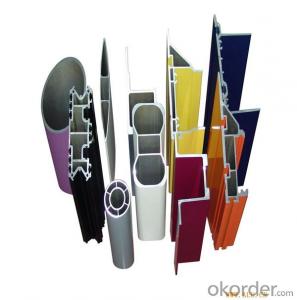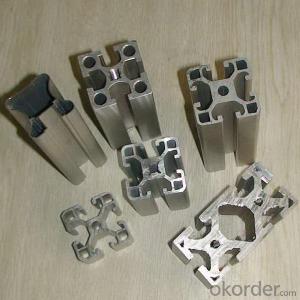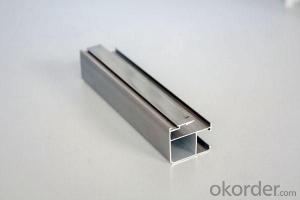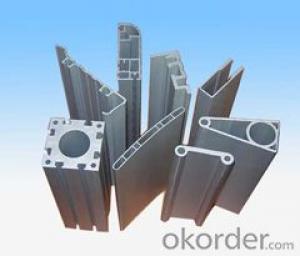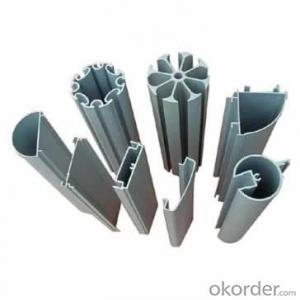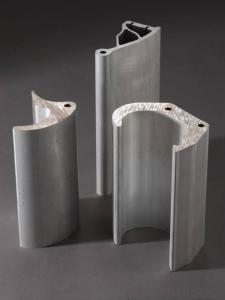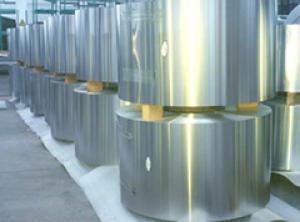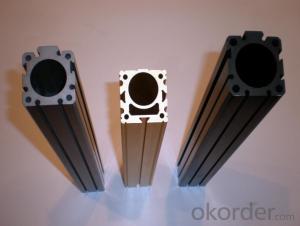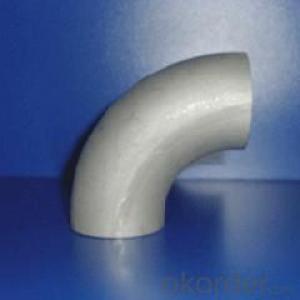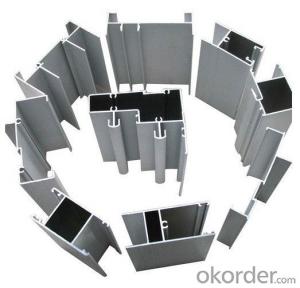Aluminum Profiles for LED - Aluminum Alloy Profile for Power Amplifier Heat Sink
- Loading Port:
- Shanghai
- Payment Terms:
- TT OR LC
- Min Order Qty:
- 5 m.t.
- Supply Capability:
- 10000 m.t./month
OKorder Service Pledge
OKorder Financial Service
You Might Also Like
Specification
1. Specification of Aluminum Heat Sink Aluminum Alloy Profile for Power Amplifier
Alloy | AA1050,AA1060, AA1070, AA1100 |
Temper: | H12, H14, H16, H18, H22, H24, H26, H32,HO, F |
Thickness: | 0.10-500mm |
Width: | 10mm- 2200mm |
Standard: | GB/T3880-2006, ASTM, ISO, EU standard |
Special Specification is available on customer’s requirement | |
2. Application of Aluminum Heat Sink Aluminum Alloy Profile for Power Amplifier
wall cladding, ceilings, bathrooms, kitchens and balconies, shutters, doors,windows…
3. Feature of Aluminum Heat Sink Aluminum Alloy Profile for Power Amplifier
Surface Quality :
Be free from Oil Stain, Dent, Inclusion, Scratches, Stain, Oxide Decoration, Breaks, Corrosion, Roll Marks, Dirt Streaks and other defect which will interfere with use,
Mochenical Property:
Chemical Composite and Mechanical Property
4. Certificate:
SGS and ROHS(if client request, paid by client), MTC(plant provided), Certificate of Origin(FORM A, FORM E, CO), Bureau Veritas and SGS (if client request, paid by client), CIQS certificate
5. Image of Aluminum Heat Sink Aluminum Alloy Profile for Power Amplifier
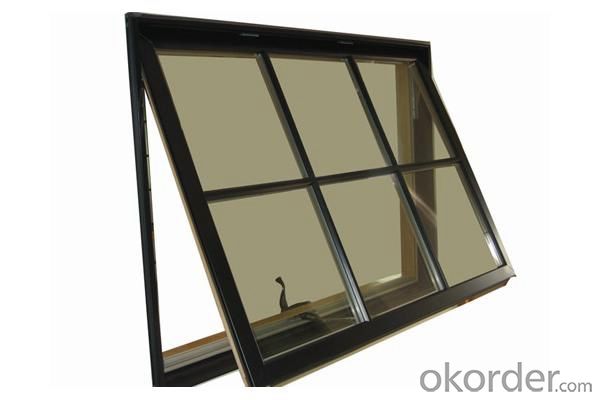
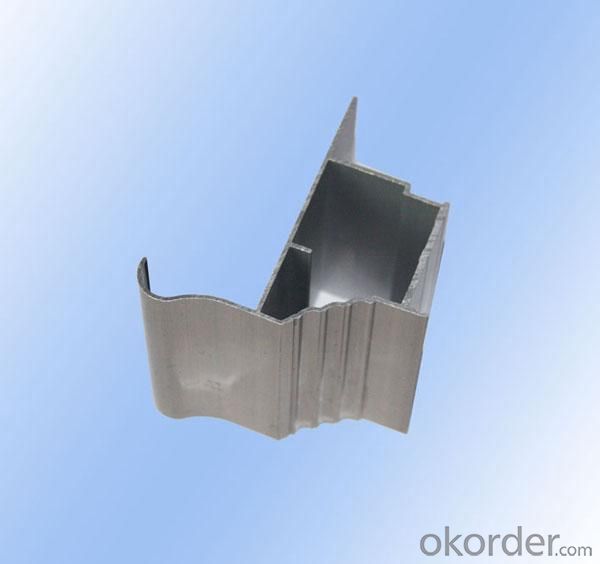
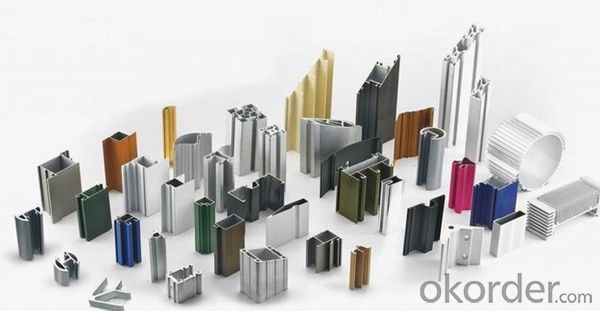
6. Package and shipping of Aluminum Heat Sink Aluminum Alloy Profile for Power Amplifier
First, plastic cloth with drying agent inside; Second, Pearl Wool; Third, wooden cases with dry agent, fumigation wooden pallets, aluminum surface could cover blue PVC film
7. FAQ
Question 1: What is your MOQ?
We accept one ton per type for an order. But the detail we could negotiate.
Question 2: What is your normal terms of payment?
We always trade with you by T/T. But we also accept the L/C as you require.
Question 3: How many kinds of the surface treatment we can choose?
You could choose different color of powder coated. Anodized of black. matte silver, nature, champagne, bronze color. Mill finished. Wooden finished and printed.etc.
Question 4: Can you supply OEM services?
We offer OEM services for 17 years.
Question 5: How many days for opening the mould?
Normally about 10 days.According to the difficulty of your drawing.
Question 6: Can i choose the package what i want?
Yes, of course. We offer various kinds of package.e.g.PE foam. Shrink film. Wrapping paper.
But we would give you professional suggestion of package.
- Q: This question asks for guidance on selecting a dependable supplier for aluminum profiles, which are essential for various industries.
- <p>To choose a reliable supplier of aluminum profiles, consider the following: Check their industry experience and reputation. Look for certifications and quality management systems like ISO standards. Evaluate their product quality by requesting samples and conducting tests. Assess their delivery times and reliability. Ensure they have a wide range of profiles to meet diverse needs. Investigate customer reviews and testimonials for insights into their service. Finally, consider the cost-effectiveness of their products without compromising on quality.</p>
- Q: This question asks for the various types of aluminum profiles that are utilized in roofing systems.
- <p>Aluminum profiles for roofing systems come in various types, each serving specific purposes. Common types include: 1. <strong>Gutter Profiles</strong>: Used for collecting and directing rainwater from the roof. 2. <strong>Fascia Profiles</strong>: Cover the ends of rafters and provide a finished edge to the roof. 3. <strong>Soffit Profiles</strong>: Installed under the eaves to allow ventilation and conceal the underside of the roof. 4. <strong>Purlin Profiles</strong>: Support the roof sheeting and are placed perpendicular to the rafters. 5. <strong>Rafter Profiles</strong>: Mimic traditional wooden rafters and provide structural support. 6. <strong>Roof Ridge Profiles</strong>: Cap the ridge of the roof, where two slopes meet. 7. <strong>Hip and Valley Profiles</strong>: Used at the intersection of two sloping roof surfaces. Each profile is designed to withstand weather conditions and provide durability, with specific dimensions and shapes tailored to the roofing system's requirements.</p>
- Q: You need is the extrusion machine section now has Liaoning Zhong Wang Liaoyuan Midas Nanshan aluminum aluminum Hunan Sheng Guangxi jungle SWA South northeast light alloy etc. they have more than 4500 tons of extrusion machine mainly produces large section comprises a track body profile LED lamp shell container ship with large cross section conductor rail section I is a seamless tube a market analyst if you have aluminum industrial material need to be aware of the problem you can consult me as friends.
- 4500T is not very large extrusion machine, a little aluminum factory are generally, in the hope of Liaoning, Qinghai Guoxin, Yun ore has more than 10000 tons of production lines, more than sixty percent domestic aluminum production is Guangdong Foshan, there are several manufacturers have the production line, such as Albert, Jianmei so, need to understand the aluminum things to find the best side to understand
- Q: Are aluminum profiles suitable for greenhouse structures?
- Yes, aluminum profiles are highly suitable for greenhouse structures. They are lightweight, durable, and resistant to rust and corrosion, making them ideal for outdoor environments. Additionally, aluminum profiles offer excellent strength and flexibility, allowing for easy customization and assembly of greenhouse structures.
- Q: Acrylic coating principle, coating on the aluminum section, he and fluorocarbon powder spraying, what is the difference
- Compared with the other two spraying methods, the best quality, the most beautiful appearance, but the price is expensive, not green. Used in high-end buildings, commercial building more
- Q: Aluminum bending or curling
- You can send details to my email: offers professional adviceBending Consult is a new company with cutting-edge technology consulting. The company's sophisticated bending technology team is committed to providing professional solutions and world-class bending machine equipment for global metal profile manufacturers, and to help them create more profits.
- Q: How do aluminum profiles contribute to sustainable building practices?
- There are several reasons why aluminum profiles are crucial in promoting sustainable building practices. To begin with, aluminum is a material that can be recycled multiple times without any loss in quality. This recyclability significantly reduces the need for extracting and processing new aluminum, which is a process that consumes a lot of energy and harms the environment. By using aluminum profiles in construction, we can greatly reduce the demand for new aluminum production and thus conserve natural resources and decrease carbon emissions. In addition, aluminum profiles are both lightweight and strong, making them ideal for creating energy-efficient structures. Their lightweight nature reduces the load on the building's foundation and structural elements, resulting in lower material requirements and reduced construction costs. Furthermore, a lighter structure requires less energy for heating and cooling, leading to decreased energy consumption and reduced greenhouse gas emissions throughout the building's lifespan. Moreover, aluminum profiles have excellent thermal and acoustic insulation properties. When used correctly, they can contribute to the overall energy efficiency of a building by minimizing heat loss or gain through windows and doors. This means that less reliance is placed on artificial heating and cooling systems, resulting in decreased energy consumption and lower utility bills. Another advantage of aluminum profiles is their durability and low maintenance requirements. They are resistant to corrosion, weathering, and UV rays, which ensures a long lifespan and reduces the need for frequent replacements and repairs. This not only saves resources but also reduces waste generation and the use of landfills. Finally, aluminum profiles offer great design flexibility and can be easily incorporated into various architectural styles and designs. This versatility allows architects and builders to create structures that are both visually appealing and functional, while still adhering to sustainable building practices. In conclusion, aluminum profiles contribute to sustainable building practices by being recyclable, lightweight, energy-efficient, thermally insulating, durable, low maintenance, and versatile. By using aluminum profiles in construction projects, we can reduce our environmental impact, conserve natural resources, and promote a more sustainable future.
- Q: What are the different sizes and dimensions of aluminum profiles?
- Aluminum profiles come in a wide range of sizes and dimensions to cater to various industrial and construction needs. These profiles are typically available in different shapes, such as angles, channels, beams, tubes, and bars, each with their own unique dimensions. For angle profiles, the common sizes range from 1/2 inch to 6 inches, with thickness measurements varying between 1/16 inch to 1/2 inch. These profiles are typically used for structural applications, reinforcements, and framing. Channel profiles are available in dimensions ranging from 1/2 inch to 8 inches, with thickness measurements varying between 1/8 inch to 1/2 inch. These profiles are commonly used for framing, support structures, and edge protection. Beam profiles have varying dimensions, including heights ranging from 1 inch to 12 inches and flange widths from 1 inch to 6 inches. The thickness of these profiles can range from 1/8 inch to 1/2 inch. Beam profiles are often used for load-bearing applications, such as bridges, buildings, and heavy machinery. Tube profiles come in a variety of sizes, including outer diameters ranging from 1/2 inch to 12 inches, and wall thicknesses between 1/16 inch to 1/2 inch. These profiles are commonly utilized in applications requiring fluid transportation, structural support, and decorative purposes. Finally, aluminum bars are available in various dimensions, such as widths ranging from 1/8 inch to 6 inches, and heights from 1/8 inch to 2 inches. The thickness of these bars can vary from 1/8 inch to 1/2 inch. Aluminum bars are commonly used for structural support, framing, and decorative purposes. It's important to note that these dimensions are not exhaustive and may vary depending on the manufacturer and specific requirements of the project. It is recommended to consult with the manufacturer or supplier to determine the exact sizes and dimensions available for a specific aluminum profile.
- Q: How do you calculate the strength of aluminum profiles?
- To calculate the strength of aluminum profiles, there are several factors that need to be considered. 1. Material properties: The first step is to know the mechanical properties of the aluminum alloy being used, such as its yield strength, ultimate tensile strength, and elastic modulus. These properties can be obtained from material data sheets or testing. 2. Cross-sectional area: The next step is to determine the cross-sectional area of the aluminum profile. This can be done by measuring the dimensions of the profile or referring to its specifications. The cross-sectional area is typically calculated by multiplying the width and height of the profile. 3. Load calculation: Once the cross-sectional area is known, the next step is to calculate the applied load on the profile. This can be determined by considering the weight or force that will be acting on the profile. The load can be static or dynamic, and it is important to account for any potential variations or impacts. 4. Stress analysis: With the load and cross-sectional area determined, the stress on the aluminum profile can be calculated using the formula: Stress = Load / Cross-sectional area. This will give the stress value in units of force per unit area (e.g., N/m2 or psi). 5. Safety factor: To ensure the profile's strength is adequate, a safety factor is typically applied. The safety factor accounts for uncertainties in the load calculations and ensures the profile can handle unexpected loads or variations. Common safety factors range from 1.5 to 4, depending on the specific application and industry standards. By considering these factors and performing the necessary calculations, it is possible to determine the strength of aluminum profiles and ensure they meet the required safety standards for their intended applications.
- Q: What materials are used for aluminum profile packing?
- Aluminum packaging standard is generally pearl cotton and kraft paper packaging, but depends on the degree of product requirements,
Send your message to us
Aluminum Profiles for LED - Aluminum Alloy Profile for Power Amplifier Heat Sink
- Loading Port:
- Shanghai
- Payment Terms:
- TT OR LC
- Min Order Qty:
- 5 m.t.
- Supply Capability:
- 10000 m.t./month
OKorder Service Pledge
OKorder Financial Service
Similar products
Hot products
Hot Searches
Related keywords
